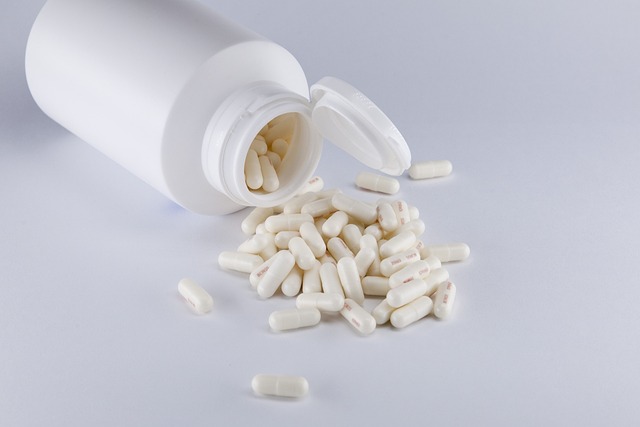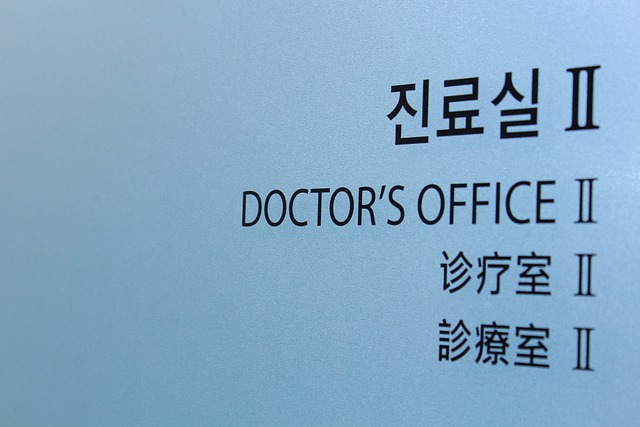Semaglutide therapy is a game-changer in diabetes management, mimicking the natural hormone GLP-1 to suppress glucose production and enhance insulin secretion. With various formulations, it significantly lowers HbA1c levels and improves patient satisfaction due to its weight loss potential and reduced hypoglycemic episodes. However, challenges like daily injection routines and side effects can hinder adherence. Healthcare providers can improve patient education, offer practical tips, and utilize technology for regular follow-ups and support, enhancing commitment to semaglutide therapy. Future research should focus on simplifying prescription processes and leveraging technology to maximize the benefits of this innovative semaglutide diabetes treatment.
“Discover the transformative power of semaglutide therapy in managing diabetes. This comprehensive guide explores the various facets of this innovative treatment, from its mechanism as a diabetes medication to patient satisfaction and adherence challenges. We delve into strategies to enhance compliance, addressing common side effects and providing practical tips for daily integration.
Learn about the role of education in improving patient outcomes, healthcare provider insights on facilitating adherence, and future prospects for expanding semaglutide access. Uncover the key elements influencing long-term commitment to this game-changing semaglutide diabetes treatment.”
Understanding Semaglutide Therapy: An Overview of Diabetes Treatment

Semaglutide therapy is a cutting-edge approach in diabetes management, offering a novel solution for patients seeking improved glycemic control. This medication, a glucagon-like peptide-1 (GLP-1) receptor agonist, mimics the natural hormone GLP-1, which plays a crucial role in regulating blood sugar levels. By stimulating these receptors, semaglutide aids in suppressing glucose production and enhancing insulin secretion, thereby fostering better diabetes control.
In the context of diabetes treatment, semaglutide presents as a versatile therapy with various formulations, including injections and oral medications. Its ability to reduce HbA1c levels—a measure of long-term blood sugar control—has garnered significant attention in the medical community. Additionally, patient satisfaction with semaglutide therapy has shown promise due to its potential for weight loss, reduced hypoglycemic episodes, and improved overall quality of life compared to traditional diabetes medications.
Adherence to Semaglutide Regimen: Challenges and Strategies

Adherence to Semaglutide Regimen: Challenges and Strategies
Semaglutide, a novel diabetes treatment, offers significant benefits in blood sugar control for patients with type 2 diabetes. However, one of the key challenges lies in ensuring patient adherence to the prescribed semaglutide regimen. Many patients struggle with the daily injection routine, often citing convenience and fear of needles as primary obstacles. Additionally, the complex dosing instructions and potential side effects can deter patients from consistently following their treatment plan.
To overcome these challenges, healthcare providers must employ strategic interventions. Patient education plays a pivotal role in enhancing adherence; clear explanations about the benefits of semaglutide, along with practical tips for injection techniques, can empower individuals to take an active role in their care. Regular follow-ups and supportive counseling sessions further encourage patients to stay committed to their treatment regimen. Additionally, using technology like mobile apps or reminders can help simplify dosing schedules and improve overall patient satisfaction with semaglutide diabetes treatment.
Patient Satisfaction with Semaglutide: Uncovering Benefits and Drawbacks

Patient satisfaction with semaglutide therapy is a critical aspect of its effectiveness as a diabetes treatment. Many patients report significant benefits, including improved blood sugar control and weight loss, leading to enhanced overall well-being. The once-weekly injection schedule is often appreciated for its convenience compared to more frequent insulin administrations. Additionally, the medication’s ability to reduce hunger pangs and promote satiety can simplify meal planning and make it easier for patients to adhere to healthy eating habits.
However, not all patients find semaglutide therapy without drawback. Common side effects like nausea, vomiting, and diarrhea can be challenging, especially during the initial adjustment period. Some users also experience gastrointestinal discomfort that may impact their quality of life. Moreover, the medication’s potential for severe hypoglycemia, though rare, adds a layer of complexity to patient management. Nonetheless, with proper education and support from healthcare providers, many patients are able to successfully navigate these challenges and reap the benefits of semaglutide therapy in their diabetes management journey.
The Role of Education in Enhancing Semaglutide Adherence

Patient education plays a pivotal role in enhancing adherence to semaglutide therapy for those managing diabetes. By providing clear, comprehensive information about the medication’s benefits, action mechanisms, and potential side effects, healthcare providers can empower patients to actively participate in their treatment plans. This includes explaining how semaglutide works to lower blood sugar levels, its once-weekly administration schedule, and any necessary precautions or lifestyle adjustments required for optimal results.
Educational interventions tailored to individual patient needs, such as demonstrations on injection techniques or personalized counseling sessions, can significantly improve understanding and adherence rates. Equipping patients with the knowledge to manage their condition confidently fosters a sense of agency, encouraging them to persist with semaglutide therapy over the long term.
Addressing Common Side Effects: Optimizing Patient Experience

Semaglutide, a glucagon-like peptide-1 (GLP-1) receptor agonist, is a groundbreaking diabetes treatment that has shown remarkable efficacy in managing blood sugar levels. However, like any medication, it comes with potential side effects that can impact patient adherence and satisfaction. Common experiences include gastrointestinal symptoms such as nausea, vomiting, or diarrhea, which are often initial side effects as the body adjusts to the new medication. These adverse reactions can significantly affect patients’ quality of life, leading some to consider discontinuing treatment.
To optimize patient satisfaction and adherence, healthcare providers must employ strategies that address these common side effects proactively. Patient education becomes paramount; explaining the potential symptoms and their transient nature can help manage expectations. Additionally, adjusting the dosage or timing of semaglutide administration may alleviate gastrointestinal discomfort. Regular follow-up appointments allow for open communication, where patients can voice concerns and receive tailored support, ensuring a more positive treatment experience and encouraging long-term adherence to semaglutide diabetes treatment.
Long-term Commitment to Semaglutide Therapy: Retention Strategies

Many patients with type 2 diabetes face a challenge in maintaining long-term adherence to their treatment plans, and semaglutide therapy is no exception. However, given its potential benefits in weight loss and glycemic control, it’s crucial to explore strategies that enhance patient retention. Healthcare providers play a vital role in fostering commitment by ensuring patients understand the purpose and benefits of semaglutide diabetes treatment. Regular follow-ups, clear communication about side effects and their management, and personalized support can significantly improve adherence rates.
Additionally, patient education on the long-term goals of semaglutide therapy and its positive impact on overall health can motivate them to stay on track. Incorporating technology, such as mobile apps or digital monitoring devices, can also make the treatment experience more engaging and convenient, thereby boosting patient satisfaction and retention over time.
Integrating Semaglutide into Daily Life: Practical Tips for Patients

Integrating Semaglutide into daily life requires a shift in routine and habits, especially for those newly initiated to this diabetes treatment. It’s crucial to approach this transition with practical tips tailored to real-life challenges. Start by scheduling injection times around your daily activities to ensure consistency. Keep your semaglutide vials and syringes easily accessible, placing them in visible spots like a kitchen counter or bedside table. Many patients find using an injection log or app helpful for tracking doses, dates, and any side effects, fostering better adherence.
Meal planning is another strategic approach. Since semaglutide is administered before meals, creating structured meal times and sticking to a balanced diet can make dosing more manageable. Exploring meal delivery services or consulting a dietitian might aid in this process. Additionally, setting reminders for insulin administration using alarms or health apps can help patients stay on track. Remember, consistent use of semaglutide leads to better blood sugar control, so these practical steps are key to reaping the full benefits of this game-changing diabetes treatment.
Healthcare Provider Perspectives on Facilitating Adherence

Healthcare providers play a pivotal role in enhancing patient adherence to semaglutide diabetes treatment, as they are often the primary point of contact for patients. From initial prescription and education about the medication to regular check-ins, their guidance is essential. Many providers employ strategies such as personalized counseling, ensuring patient understanding of the treatment’s benefits and potential side effects. This approach helps address any concerns or misconceptions, fostering higher adherence rates.
Additionally, healthcare providers can leverage technology to facilitate adherence. Digital tools like mobile apps and telemedicine platforms enable remote monitoring, allowing providers to detect non-adherence early on and intervene promptly. These innovations streamline the patient experience, making it more convenient and encouraging consistent use of semaglutide for improved diabetes management.
Future Directions: Improving Semaglutide Access and Compliance

To enhance the impact of semaglutide therapy, future research and healthcare strategies should focus on improving access and adherence among patients with diabetes. One key direction is to streamline the prescription process, making it more accessible for both patients and healthcare providers. This can involve simplifying prescribing guidelines and encouraging conversations between doctors and patients about the benefits of semaglutide diabetes treatment.
Technology could play a significant role in boosting compliance. Digital health solutions, such as mobile apps or patient monitoring systems, could provide real-time support, education, and reminders for taking semaglutide, potentially improving overall patient satisfaction with their diabetes management regimen.
